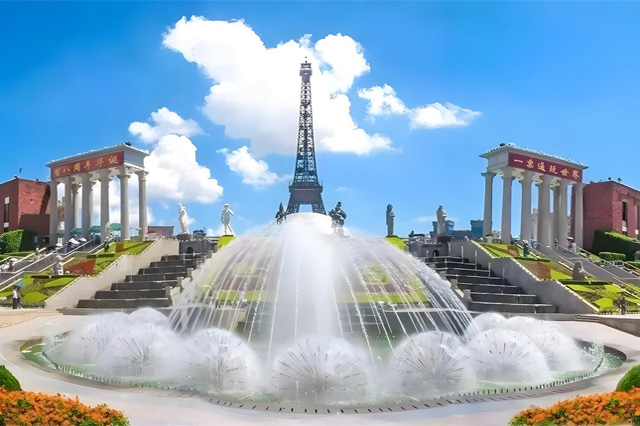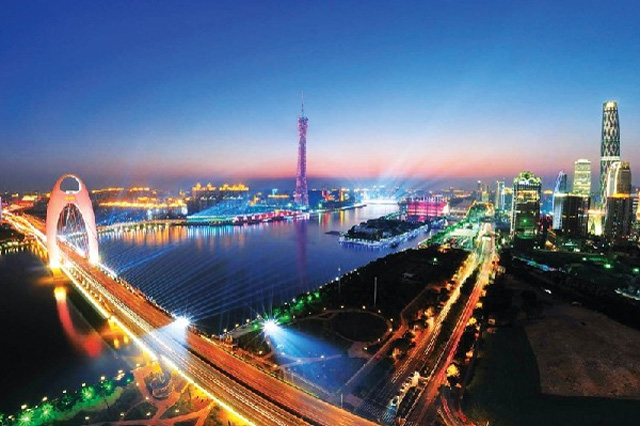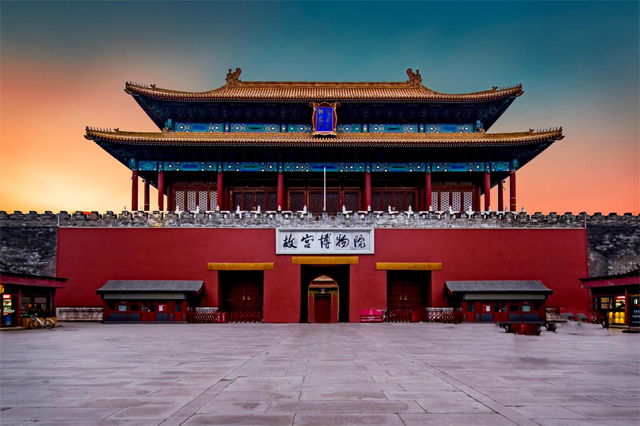Shanxi 5A tourist attractions summary, take you to play Sanjin!
- China Tourism
- 2025-04-25 19:15
- 98
Shanxi Province, named for its location in the west of the Taihang Mountains, referred to as "Jin", also known as "Sanjin", known as Hedong in ancient times, is located in the middle of the Yellow River Basin. Shanxi is one of the birthplaces of the Chinese nation. It is the birthplace of drama culture, the core area of the Great Wall culture and the place of integration, the concentration area of stone culture, the first good area of Buddhist culture, and the museum of ancient wooden buildings. It has a written history of three thousand years. Next, I will give you a summary of Shanxi's 5A-level tourist attractions and show you around Sanjin!
1. Taiyuan Jinci Tianlong Mountain Scenic Area
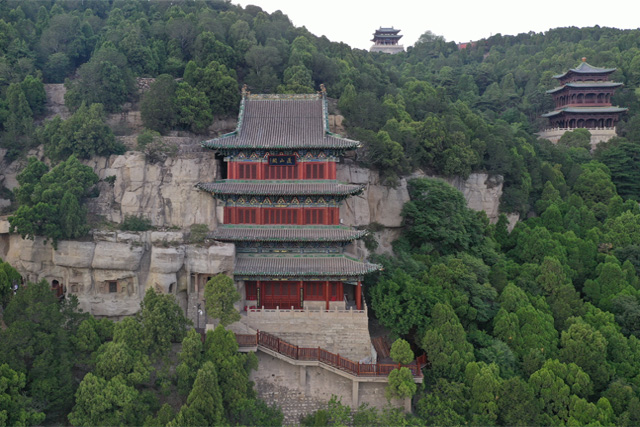
The Tianlong Mountain Scenic Area of Jinci is located in the southwest of Taiyuan, covering an area of 3.86 square kilometers. The "Shuijing Notes" of Li Daoyuan of the Northern Wei Dynasty records: "Among Jinchuan, the most attractive place", it can be seen that it was already well-known as early as 1500 years ago. Tourist attractions. Jinci Tianlong Mountain is an important physical witness and cultural relic of the historical development and changes of Jinyang and Taiyuan. Jinci is the earliest, largest and longest classical garden in Tang and Song Dynasties in China. Jinci has a complete sequence of ancient architecture times and complete building types. It is the only building complex that integrates the essence of ancient architecture of Song, Jin, Yuan, Ming and Qing Dynasties. It is known as the Museum of ancient architecture in China. Tianlongshan Grottoes is an important node in the gradual localization of grotto culture in China. It reflects the brilliant achievements of grotto art from the Southern and Northern Dynasties to the Sui and Tang Dynasties. It is known as the Tianlongshan style and has become a bright pearl in the world's sculpture art treasure house.
2. Yungang Grottoes Scenic Spot in Datong City
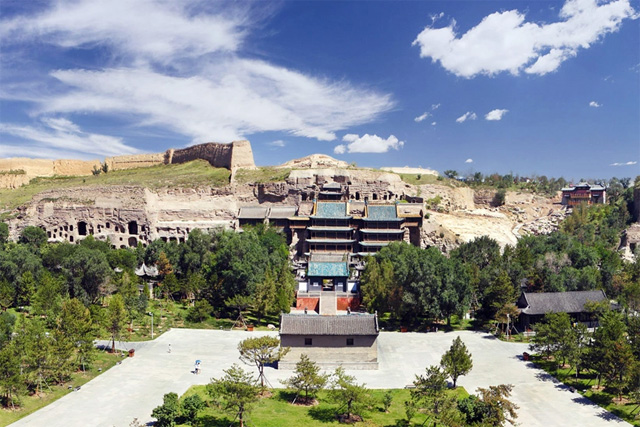
Datong Yungang Grottoes Scenic Area, referred to as Yungang Grottoes Scenic Area, is located in Yungang Town, Yungang District, Datong City, Shanxi Province. It is mainly divided into two parts: grottoes and landscape area. Yungang Grottoes, formerly known as Wuzhou (Zhou) Mountain Grottoes Temple, began to be renamed Yungang Grottoes in the Ming Dynasty. According to the excavation time, Yungang Grottoes can be divided into three phases: early, middle and late. The style of grotto statues in different periods also has its own characteristics. The statues of Yungang Grottoes are magnificent and rich in content. They can be called the crown of Chinese stone carving art in the 5th century AD and are known as the treasure house of ancient Chinese carving art.
3. Pingyao Ancient City Scenic Area, Jinzhong City
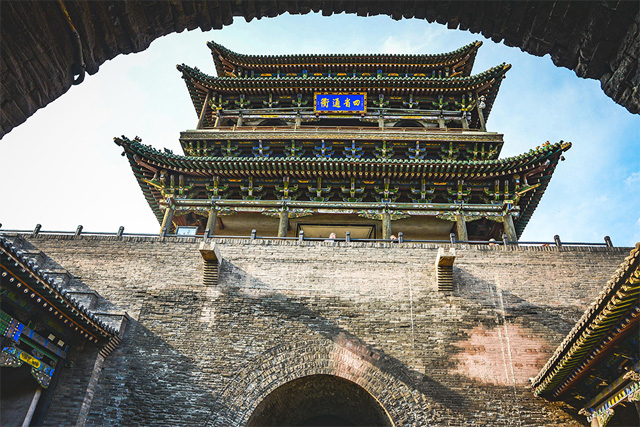
Pingyao Ancient City Scenic Area is located in the central part of Shanxi Province. It was built in the Xuanwang period of the Western Zhou Dynasty. It has a history of more than 2800 years and is a national historical and cultural city. The ancient city of Pingyao is a huge building complex composed of city walls, shops, streets, temples, and dwellings. It is an outstanding example of Chinese Han cities in the Ming and Qing Dynasties. It preserves all its characteristics and shows people in the development of Chinese history. A complete picture of extraordinary cultural, economic, social and religious development. The ancient city of Pingyao shows the evolution of Chinese architectural style and urban planning over the past five centuries. It is called a living sample for the study of ancient Chinese cities. It has rich and unique value in architecture, religion, commerce, folklore, and folk art.
4. Jincheng Huangcheng Xiangfu Ecological and Cultural Tourism Zone
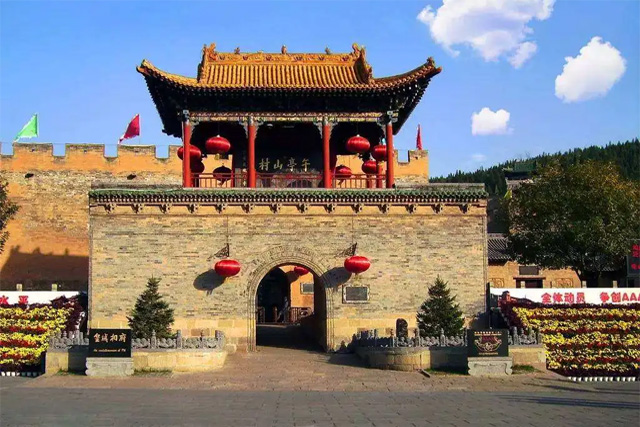
Jincheng Huangcheng Xiangfu Ecological and Cultural Tourism Zone, referred to as Huangcheng Xiangfu Ecological and Cultural Tourism Zone, is located in Jincheng City, Shanxi Province. It is composed of four scenic spots: Huangcheng Xiangfu, Ecological Agricultural Sightseeing Park, Jiu Nu Fairy Lake and Huangcheng Xiaokang New Village. The scenic spot of Huangcheng Xiangfu is the former residence of Chen Tingjing, the grand secretary of Wenyuan Pavilion of the Qing Dynasty and the minister of the Ministry of Personnel, the chief reader of Kangxi Dictionary and the famous teacher of Emperor Kangxi. It consists of the inner city, the outer city, Ziyun Qian, Xishan Yuan and other parts. It is a rare building of the imperial palace in the Qing Dynasty, it is praised by experts as "the house of the first cultural giant in northern China".
5. Tourist Scenic Spot of Hongdong Big Sophora Tree Seeking Roots and Ancestor Worship Garden in Linfen City
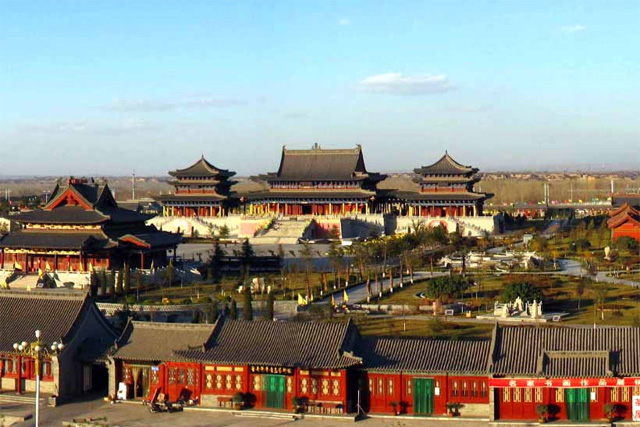
Linfen City Hongdong Big Sophora Tree Root-seeking Ancestor Garden Tourist Scenic Spot, located in Hongdong County, Linfen City, Shanxi Province, is the only sacred place for people to sacrifice with the theme of "root-seeking" and "ancestor worship" in the country, a national AAAAA-level tourist attraction, Shanxi Province Key cultural relics protection units. The scenic spot is divided into five major theme areas: "Immigrant Monuments Area", "Ancestor Worship Activity Area", "Folk Custom Tour Area", "Fenhe Ecological Area" and "Genzu Cultural Square". There are more than 60 scenic and cultural attractions such as stele pavilions, 2. three-generation locust trees, Millennium locust roots, ancestor worship hall, Guangji Temple, Shijing Building, immigrant relief map, Chinese surname garden, etc.
6. Yunqiu Mountain Scenic Area of Linfen City
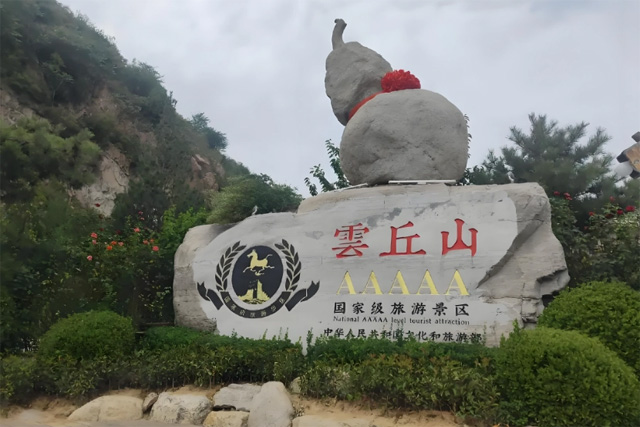
Yunqiu Mountain Scenic Area in Linfen City, referred to as Yunqiu Mountain Scenic Area, is located in Xiangning County, Linfen City, Shanxi Province. It is known as "the most beautiful peak of Gushe Mountain" and "the first victory in Hefen. Yunqiu Mountain was called "Kunlun" and "North Top" in ancient times. It was the ancestral court of the Dragon School of Quanzhen Education. It was called "North Yunqiu and South Wudang. Yunqiu Mountain has the world's rare super-large ice cave group and the permanent site of the Dahe Civilization Tourism Forum. It is an important source of "root-seeking culture in southern Shanxi". It is a comprehensive tourism that integrates tourism, leisure and vacation, health and recuperation, and folk experience. Destination.
7. Yellow River Hukou Waterfall Tourist Area
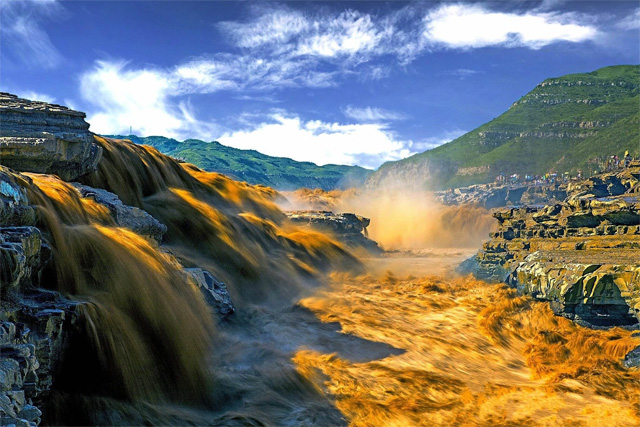
Hukou Waterfall tourist area of the Yellow River is adjacent to Hukou Town, Jixian County, Linfen City, Shanxi Province in the east and Hukou Town, Yichuan County, Yan'an City, Shaanxi Province in the west. Hukou Waterfall is the second largest waterfall in China and the largest yellow waterfall in the world. The Yellow River is running to this point, with rocks on both sides of the bank, and the estuary is narrow like Hukou, hence the name Hukou Waterfall. Hukou Waterfall has different scenery in the four seasons, and the eight natural landscapes have their own characteristics. The turbulent waves stir the national voice and bravely show the Chinese integrity. It is dazzling and shining. It has always been praised by the Chinese people as "the heart of the Yellow River and the soul of the nation". With Hukou Waterfall as the core and Qin Jin Canyon as the main body, it is a cultural tourist attraction integrating waterfall, canyon, dragon king Nian, Shili dragon trough, Mengmen Mountain, Dayu Temple, Gudukou Town, Yellow River chorus live performance and so on.
8. Taihang Mountain Grand Canyon Baquanxia Scenic Area
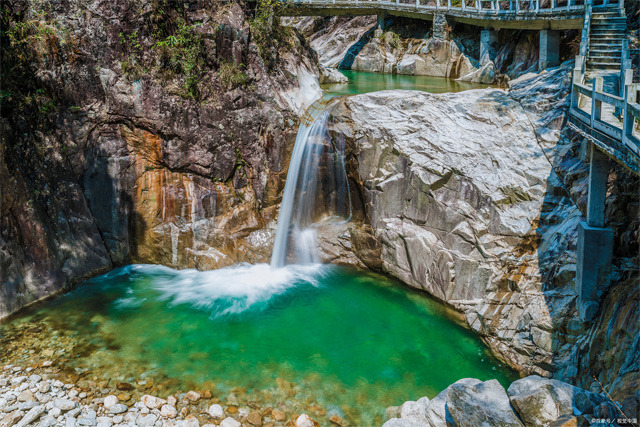
Taihang Mountain Grand Canyon Baquan Gorge Scenic Area is located in Grand Canyon Town, Huguan County, Changzhi City, Shanxi Province. It was originally named "Badaoshui" because there are eight streams of spring water in the canyon. The canyon perfectly combines the grandeur of the northern mountains and rivers with the softness of the south of the Yangtze River: there are mountains with numerous peaks, cliffs with extraordinary craftsmanship, mountains and rocks in various forms, green and surging forests, gurgling springs and crystal clear pools. The scenic area has four major tourist areas: gate tower landscape, canyon landscape, cableway landscape and trail landscape, with 36 major scenic spots. Baquan Gorge is known as the "First Xiongxia of Taihang", which integrates natural scenery and modern fashion.
9. Wutai Mountain Scenic Area, Xinzhou City
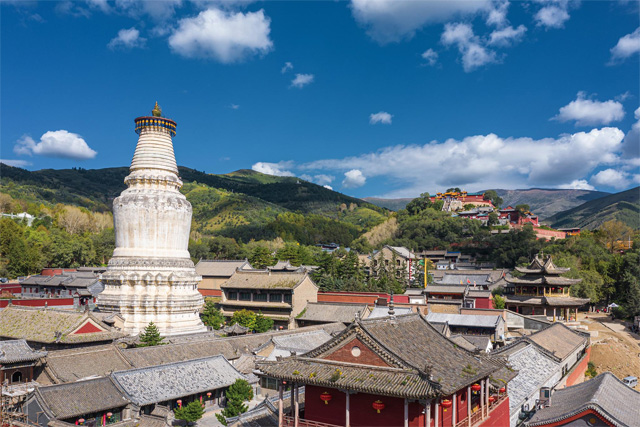
Xinzhou Wutai Mountain Scenic Area is located in the northeast of Wutai County, Xinzhou City, Shanxi Province. It is composed of Dongtai Wanghai Peak, Nantai Jinxiu Peak, Xitai Hangyue Peak, Beitai Ye Doufeng, Zhongtai Cuiyan Peak, with 68 monasteries and more than 150 pagodas. It is the first of the four famous Buddhist mountains in China and one of the five Buddhist holy places in the world. The Wutai Mountain Scenic Area in Xinzhou City has been crowned as "the first of the famous Buddhist mountains" and "the world-renowned Buddhist holy land". It is the only famous mountain in China where Chinese and Tibetan Buddhism coexist.
10. Yanmenguan Scenic Spot, Xinzhou City
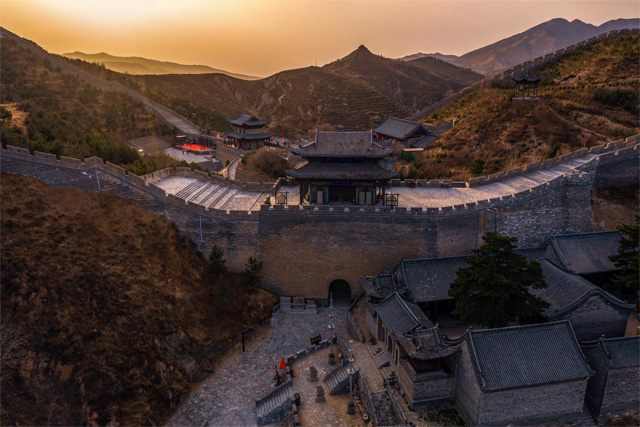
Yanmenguan Scenic Area in Xinzhou City, referred to as Yanmenguan Scenic Area, is located in Daixian County, Xinzhou City, Shanxi Province. It is a national 5A tourist attraction. Yanmen Pass is an important part of the world cultural heritage Great Wall. It is a national key cultural relic protection unit. It is the ancient pass with the longest history, the most frequent wars, the highest popularity and the widest influence. It is known as "the first pass in China". The Yanmenguan Scenic Area is a frontier culture, Great Wall culture, and pass cultural tourism area with the historical relics and ruins of the Yanmenguan military defense system as the main landscape resources. The scenic area is 30 square kilometers. The remains of historical buildings of different levels, different uses and different forms, such as Guancheng, Great Wall, Aicheng, Bingbao and Beacon Tower, have formed the desolate, dignified, vigorous and atmospheric border tourism style of the scenic spot. it shows the function and rise and fall of this historical pass, and also tells the vicissitudes of history and wind and clouds witnessed over the past 3000 years.
11. Mianshan Scenic Area, Jinzhong City
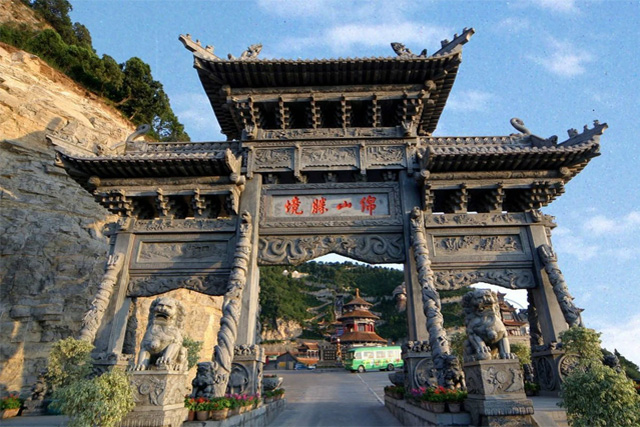
Jinzhong Mianshan Scenic Area, referred to as Mianshan Scenic Area, is located in Mianshan Town, Jiexiu City, Jinzhong City, Shanxi Province. It is a national AAAAA-level tourist attraction. Mianshan originated in the Spring and Autumn Period when Jie Zi of Jin State was burned on the mountain with her mother in seclusion. Therefore, Mianshan is also known as Jieshan. Mianshan had temple buildings as early as the Northern Wei Dynasty, and had a considerable scale of Buddhist Zen forest in the early Tang Dynasty. The antique buildings in Mianshan Scenic Area have various styles. From the perspective of architecture, the antique buildings in Mianshan not only take the advantages of the ancient buildings, but also the modern creativity of designers and builders, which integrates the essence of ancient and modern China, and constitutes the modern The unique style of antique buildings.
This article is edited and published by Journey Mark. If you have any questions, please feel free to contact us at any time.
Article Link:https://www.topvvv.com/en/China/117.html

